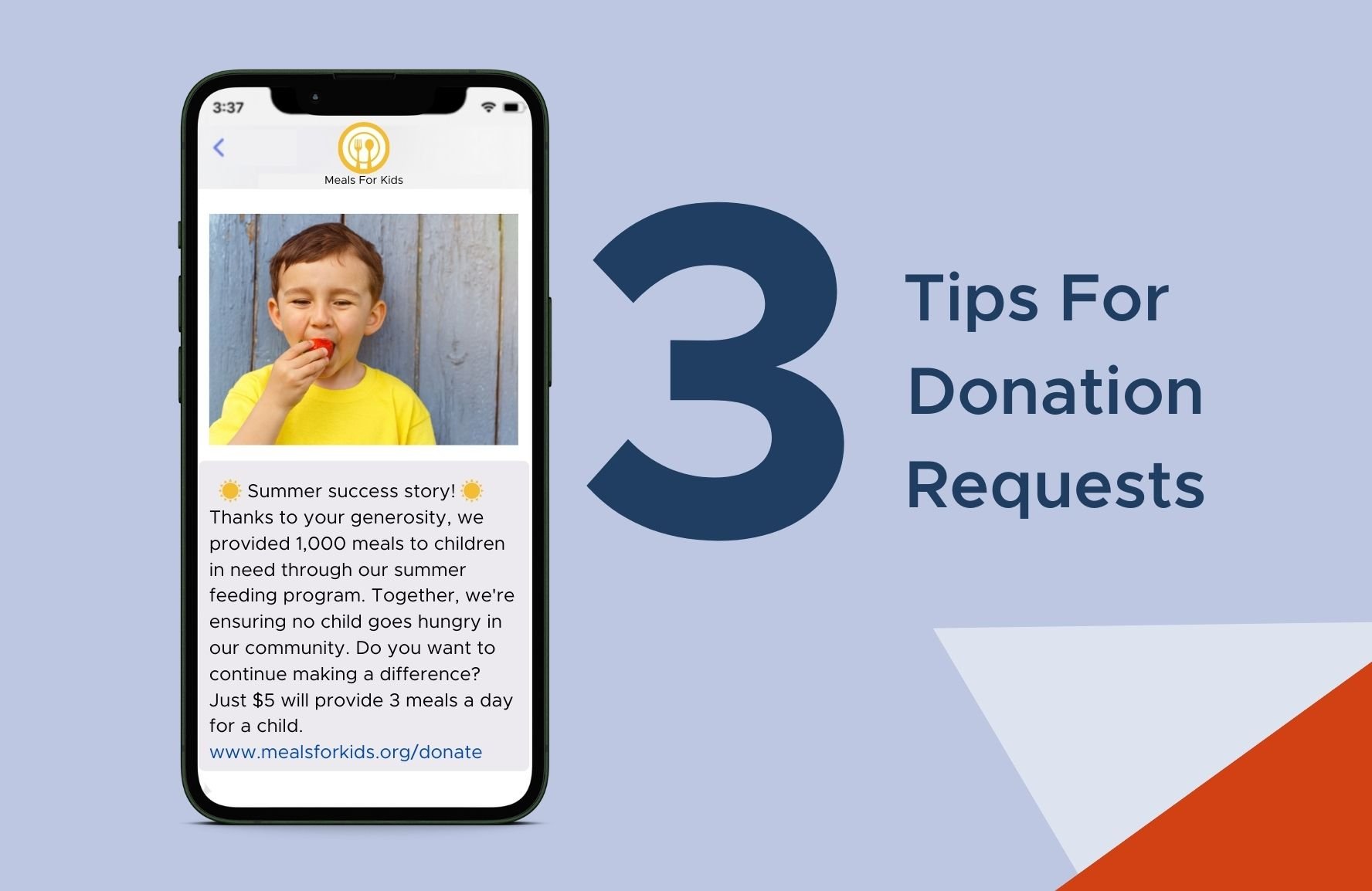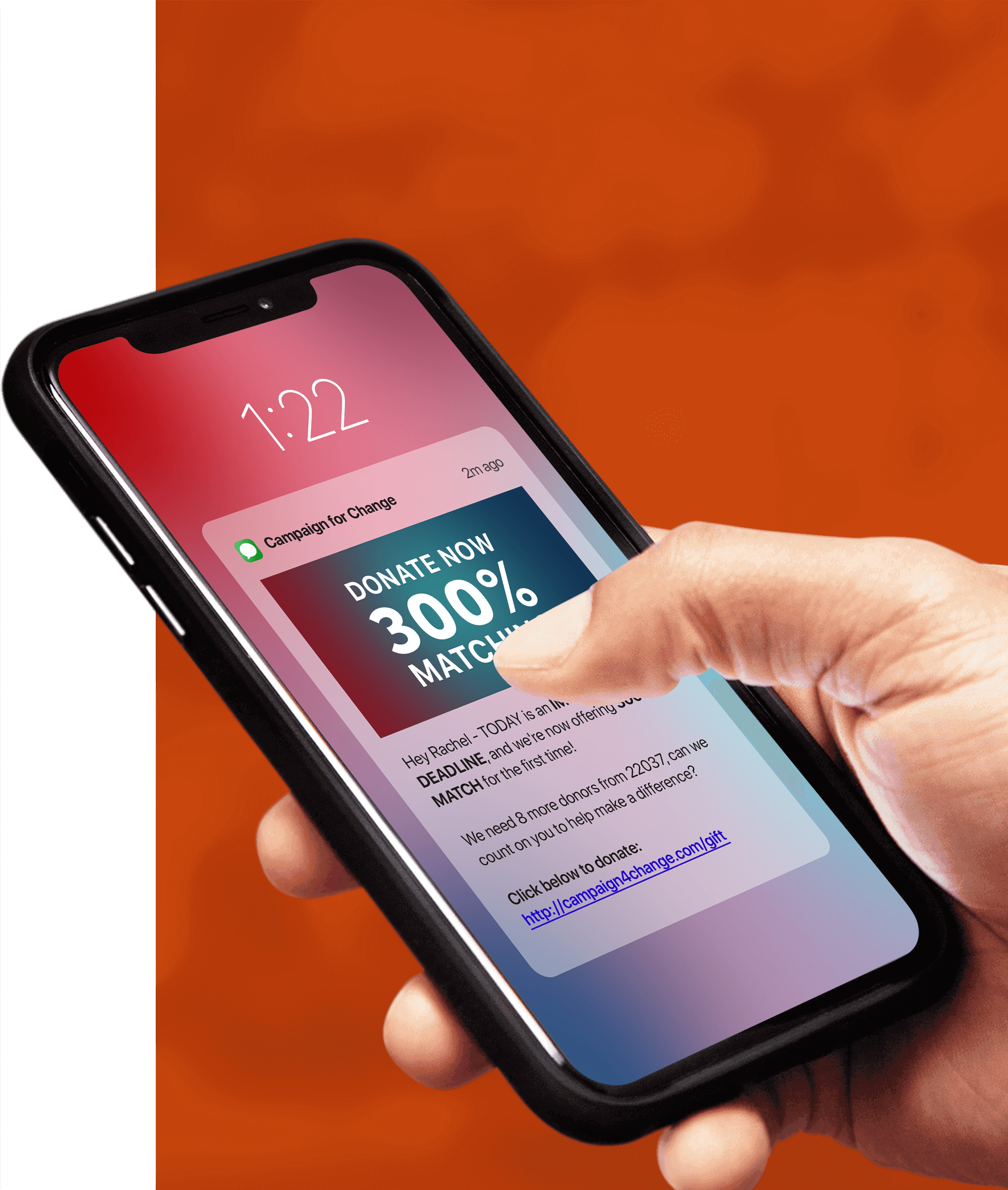[This is a guest post by our friends at Turnkey For Good. and is written by Katrina Van Huss and Otis Fulton, Ph.D. Learn more about Turnkey For Good’s mission and how they can help your nonprofit here.]
Fundraisers have problems. Text messaging can solve some of them.
Small donors are in decline. While there are many reasons, a big one is our lack of investment in small donor channels. Direct mail is expensive. Community events are staff intensive (read: expensive) and worse, were considered to be deadly during the pandemic. Now, we’re struggling to get people back out to them. As an industry, we’re still figuring out how to build events and communities—both acquisition sources—virtually.
There are bright spots. Text messaging is one of them.
When engaging constituents, nonprofits typically start the interaction through events, direct mail, email, or website visits. However, the challenge lies in transitioning from impersonal (and often unopened) emails to fostering more meaningful relationships with personalized communication. Text messaging can help, enabling nonprofit organizations to establish a direct, personalized connection with donors.
Intrusion vs. Engagement: Managing Reactions to Text Messaging
Because text messaging is such a direct line of communication, many nonprofits are wary of its potential for intrusion. Nonprofits must respect donors’ preferences and privacy by providing opt-out options and ensuring compliance with regulations set out in the TCPA (Telephone Consumer Protection Act). But nonprofits can minimize negative feelings of intrusion and foster engagement by focusing on personalized, relevant, and timely content.
The Psychological Aspects of Text Messaging
Interacting with donors via text messaging can have unique psychological implications compared to other communication channels. Text messages often evoke a sense of immediacy, creating a real-time connection that can generate heightened emotional responses. Understanding these psychological dynamics can help nonprofits craft messages that resonate deeply with donors and motivate them to take action.
Analyzing a Donation Failure: Identifying Factors for Improvement
Sometimes, despite best efforts, a fundraising campaign may fail to meet the fundraising goals. By doing a “post-mortem” analysis, nonprofits can pinpoint what led to failure. These factors might include ineffective messaging, poor timing, or a lack of personalization. These insights provide an opportunity for learning and refining future fundraising strategies.
Texting Beyond Donations: Impact on Event Management and Channel Ease
Text messaging’s potential extends beyond fundraising and can extend to event management, volunteer coordination, and other nonprofit activities. Texting for event updates, reminders, and personalized communications can enhance the attendee experience and improve event outcomes. Additionally, the ease and familiarity of texting as part of an omnichannel marketing strategy can deepen donor engagement and make it more convenient for future interactions, driving further success.
Texting Best Practices for Nonprofit Fundraising:
- Have one Clear Call-to-Action (CTA) per Text: What do you want me to do?
- Use Images: Choose good ones.
- Optimize Donation Page: Reduce “friction” everywhere you can.
- Personalize: This says, “I know you.” That feels good.
- Determine the Right Frequency: Use data to figure it out. Don’t be that person who… you know the one.
- Tracking Results: Design and tweak endlessly.
Our fundraising channels need to evolve in order to thrive. Want to learn more about how you can engage donors via text without being intrusive? Contact Tatango today. If you want to learn more about Turnkey For Good, you can check them out here.

